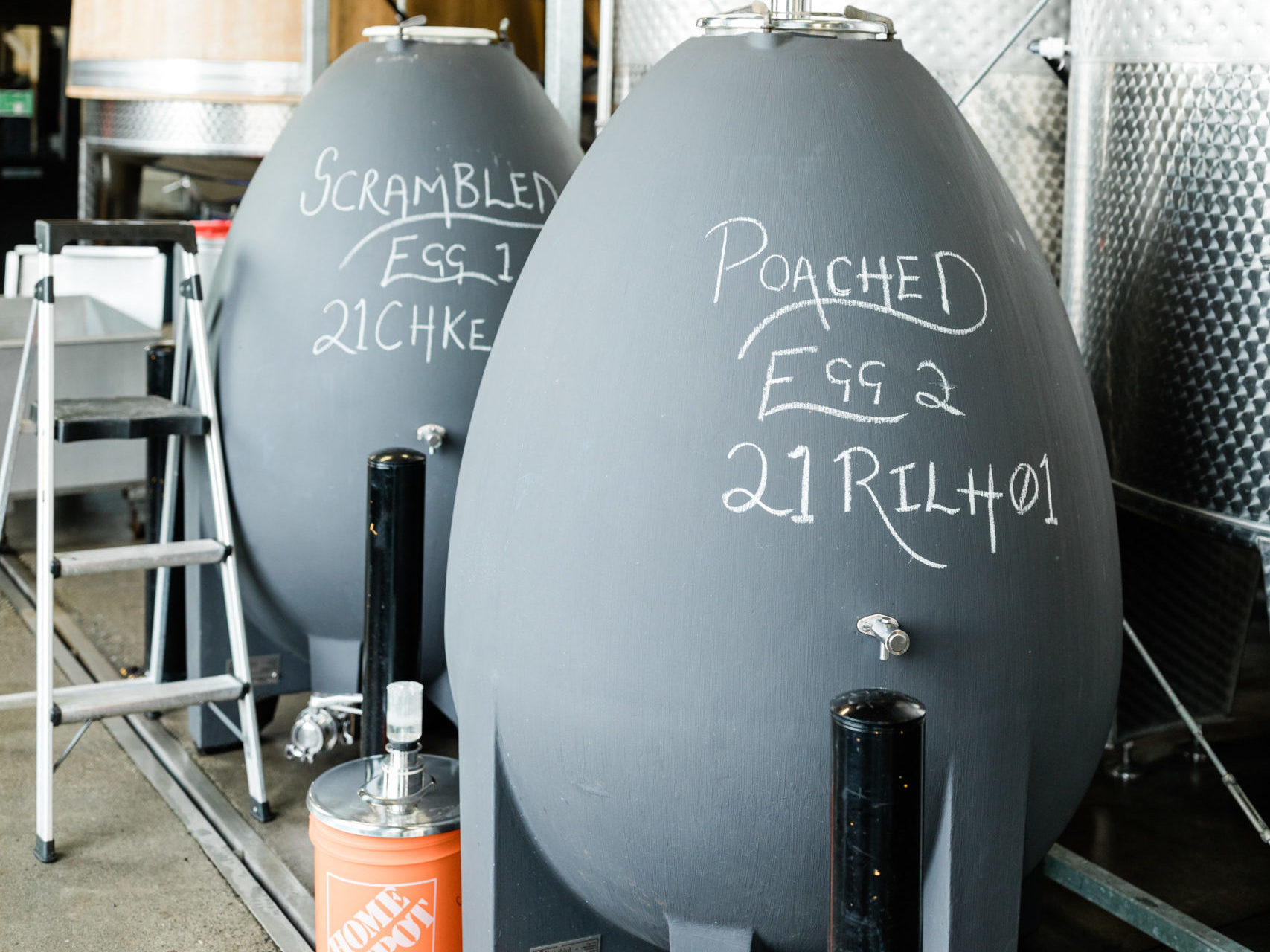Our winemaking team uses concrete in various ways. We have three 660L Nomblot concrete egg fermenters.
Now, why do we use concrete eggs? There are three main reasons: micro-oxygenation, circulation, and flavour neutrality.
Evaporation loss is relatively small, as is temperature fluctuation. Unlike stainless steel, the inner walls of concrete tanks aren’t uniform. They are porous, with thousands of tiny pockets that trap air, allowing minimal air contact with the wine.
In a concrete fermentation tank, the fermenting juice moves in a swirling motion. This movement circles from top to bottom, naturally stirring the sediment to provide complexity. There is an improved liquid composition because there are no “dead corners” where the juice may sit still.
Concrete tanks don’t give off any additional flavour, which makes them ideal for winemakers who want to reflect the true terroir of the grapes in the wine. Wines created in concrete tanks tend to be bright and fruit-forward, with excellent texture and minerality.
We predominately use concrete when fermenting our Chardonnay. You can read more about our eggs in a previous blog post.

